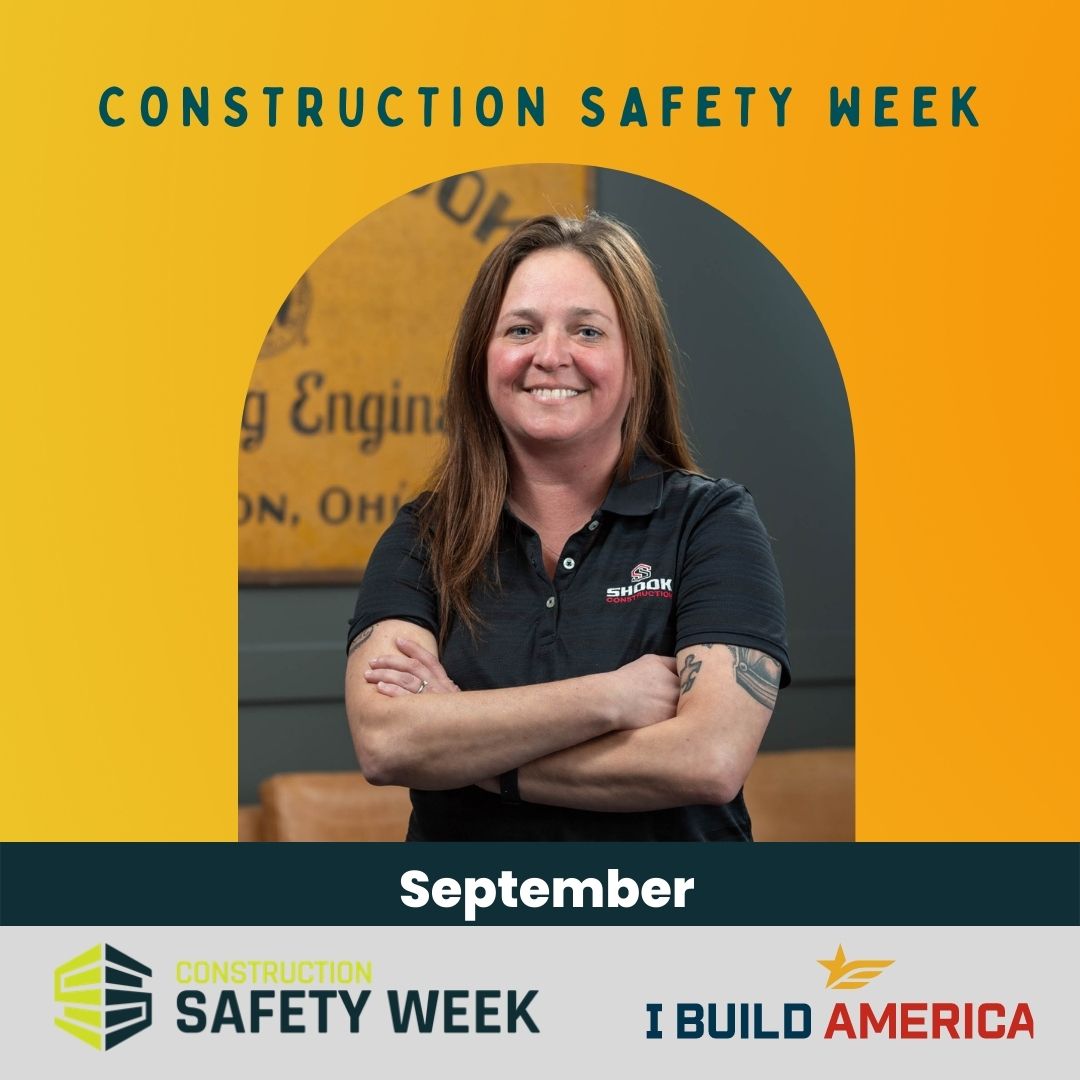
Name: September
Company: Shook Construction
Title/Position: Regional Safety Manager (Mid-West Region)
How do you contribute to the overarching safety of your company’s workforce?
As a regional safety manager, I visit the jobsites and complete audits to help identify hazards as well as provide solutions to eliminate the hazard. I act as a coach and a resource to the project teams on site to assist them in creating plans prior to completing hazardous tasks. I provide CPR/First-Aid Training on site to ensure that our personnel are prepared to act in case of an on-the-job incident.
What does your company do to ensure safety on the job?
Our company provides safety training in a variety of settings including in person and through an Online Learning Management System. Our company has also created a comprehensive safety folder system for our project teams to manage all their documentation from toolbox talks and permits to site specific safety plans. The most important thing that Shook Construction does to ensure safety on the job is that the upper management promotes safety in the field as much as they do production, they lead by example and hold everyone to the safety standards to make sure everyone goes home safe!
In your opinion, how has safety in construction changed over the last 10-15 years? What might a younger generation not realize about the current safety standards of the industry?
Over the last 10-15 years I believe that OSHA has made a bigger presence in the world of construction than what was previously experienced. OSHA has put out information to workers and employers over the years by showing up on site, holding stand-downs, holding seminars, provided letters of interpretation of the standards, and issued the “QuickTakes” newsletter along with various other initiatives to share information. In addition to the efforts of OSHA, many organizations have felt the impact of what a work-related injury, or an OSHA violation can do to them. Either instance could devastate an entire company. Back in “the good ole days” workers didn’t think much about the consequences of unsafe and unplanned work; but now thankfully whether it be due to more information or the fear of a violation, companies are making safety a priority on their projects.